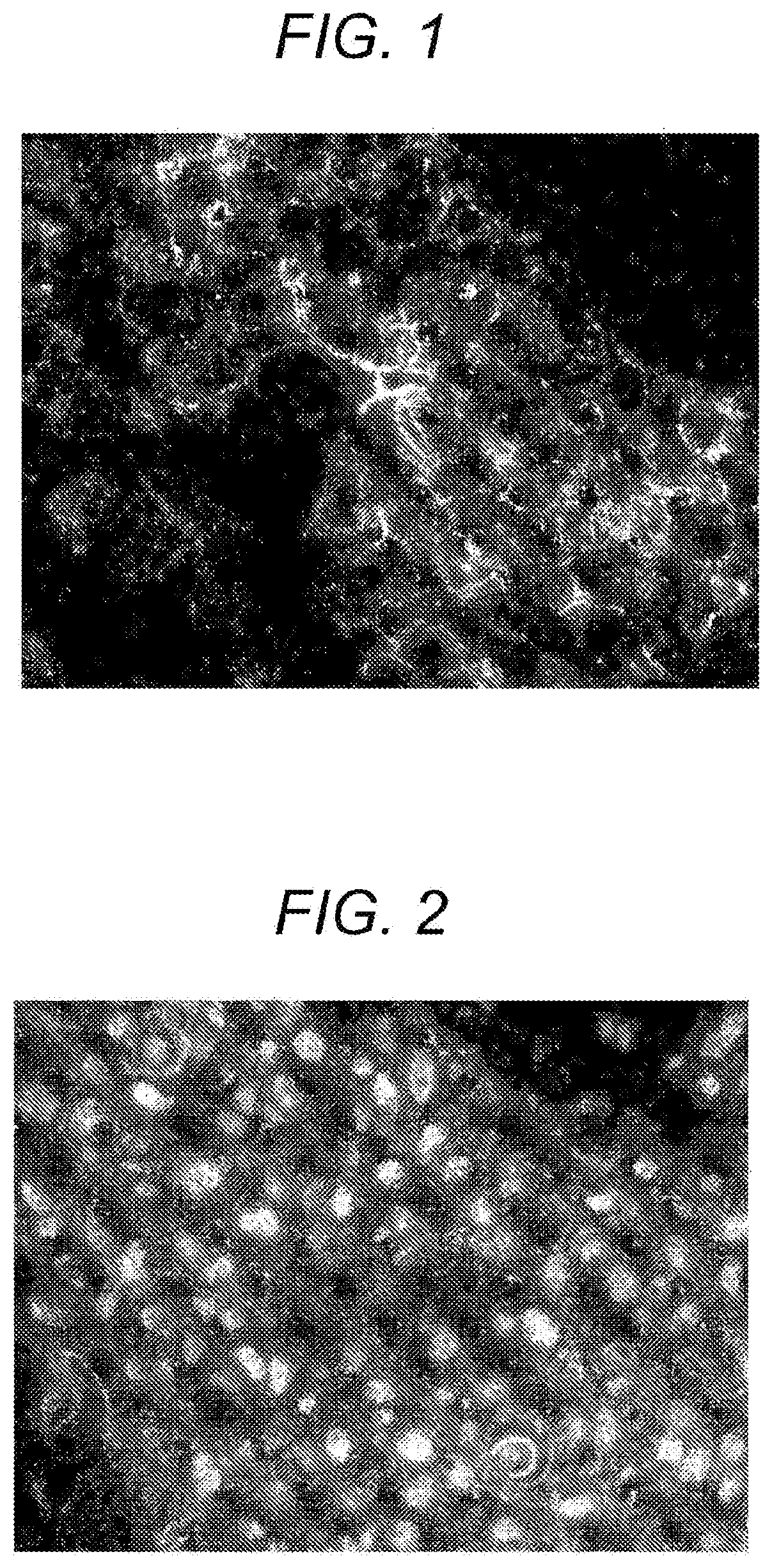Method for evaluating surface state of particles, and evaluation system
- Summary
- Abstract
- Description
- Claims
- Application Information
AI Technical Summary
Benefits of technology
Problems solved by technology
Method used
Image
Examples
example 1
Example 1-I
[0092]In a 1.5 mL Eppendorf tube, 0.2 mL of phosphate buffered saline (PBS) was put as an aqueous dispersion medium, and 0.05 mg of the fluorescent nanoparticles I as a dry weight were dispersed therein. Furthermore, 0.2 mL of chloroform was added thereto as an organic dispersion medium. The resulting mixture was vibrated vigorously.
[0093]A PBS phase and a chloroform phase formed an interface and were separated from each other. Thereafter, the fluorescence intensity of the chloroform phase was measured at an excitation wavelength of 580 nm using a spectrofluorometer F-7000 (manufactured by Hitachi, Ltd.). From the obtained fluorescence intensity, the amount of the fluorescent nanoparticles I contained in the chloroform phase was determined using a calibration curve of the dye determined beforehand A ratio of the amount of the fluorescent nanoparticles I contained in the chloroform phase with respect to the total amount of the fluorescent nanoparticles I was determined to ...
example 1-ii
[0094]Operation similar to Example 1-I was performed except that the fluorescent nanoparticles II were used in place of the fluorescent nanoparticles I, and the amount of the fluorescent nanoparticles II contained in the chloroform phase was determined. A ratio of the amount of the fluorescent nanoparticles II contained in the chloroform phase with respect to the total amount of the fluorescent nanoparticles II was determined to be 90% by weight. That is, 10% by weight of the total fluorescent nanoparticles II was contained in the PBS phase. From this result, it has been found that the fluorescent nanoparticles II have a surface state having an extremely higher affinity to chloroform than PBS.
[0095]From the results of Examples 1-I and 1-II, it has been found that by performing the method for evaluating a surface state of particles for the fluorescent nanoparticles containing a fluorescent dye and a melamine resin using PBS and chloroform as the two types of dispersion media, it is p...
example 2
Example 2-I
[0096]Operation similar to Example 1-I was performed except that ethyl acetate was used in place of chloroform, and the amount of the fluorescent nanoparticles I contained in the ethyl acetate phase was determined. A ratio of the amount of the fluorescent nanoparticles I contained in the ethyl acetate phase with respect to the total amount of the fluorescent nanoparticles I was determined to be 6% by weight. That is, 94% by weight of the total fluorescent nanoparticles I was contained in the PBS phase. From this result, it has been found that the fluorescent nanoparticles I have a surface state having an extremely higher affinity to PBS than ethyl acetate.
PUM
 Login to View More
Login to View More Abstract
Description
Claims
Application Information
 Login to View More
Login to View More - R&D
- Intellectual Property
- Life Sciences
- Materials
- Tech Scout
- Unparalleled Data Quality
- Higher Quality Content
- 60% Fewer Hallucinations
Browse by: Latest US Patents, China's latest patents, Technical Efficacy Thesaurus, Application Domain, Technology Topic, Popular Technical Reports.
© 2025 PatSnap. All rights reserved.Legal|Privacy policy|Modern Slavery Act Transparency Statement|Sitemap|About US| Contact US: help@patsnap.com

